
Merneferre Ay was an ancient Egyptian pharaoh of the mid 13th Dynasty. The longest reigning pharaoh of the 13th Dynasty, he ruled a likely fragmented Egypt for over 23 years in the early to mid 17th century BC. A pyramidion bearing his name shows that he possibly completed a pyramid, probably located in the necropolis of Memphis.
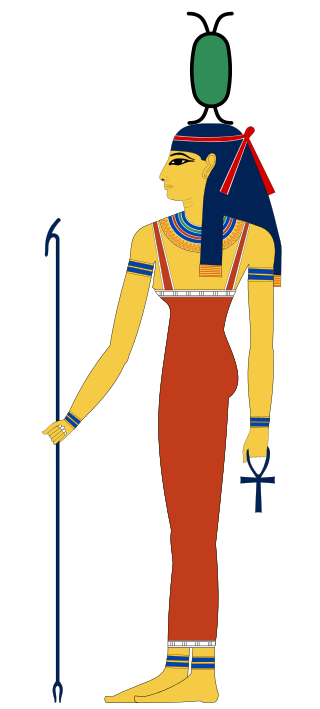
Neith was an early ancient Egyptian deity. She was said to be the first and the prime creator, who created the universe and all it contains, and that she governs how it functions. She was the goddess of the cosmos, fate, wisdom, water, rivers, mothers, childbirth, hunting, weaving, and war.
Sobek was an ancient Egyptian deity with a complex and elastic history and nature. He is associated with the Nile crocodile or the West African crocodile and is represented either in its form or as a human with a crocodile head. Sobek was also associated with pharaonic power, fertility, and military prowess, but served additionally as a protective deity with apotropaic qualities, invoked especially for protection against the dangers presented by the Nile. Sobek has been famed for having been revered by the first female Pharaoh by the Nebty name Sat-Sekhem-Nebet-Tawy Sobekneferu, present both in the female Pharaoh's nomen, Sobekneferu, and her praenomen Kasobekre.
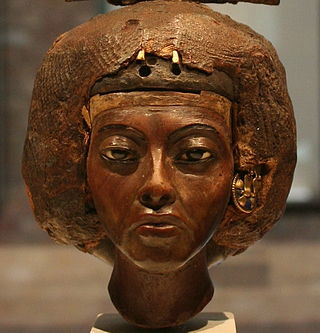
Tiye was the Great Royal Wife of the Egyptian pharaoh Amenhotep III, mother of pharaoh Akhenaten and grandmother of pharaoh Tutankhamun; her parents were Yuya and Thuya. In 2010, DNA analysis confirmed her as the mummy known as "The Elder Lady" found in the tomb of Amenhotep II (KV35) in 1898.
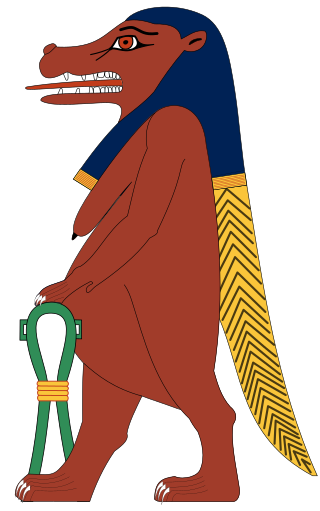
In Ancient Egyptian religion, Taweret is the protective ancient Egyptian goddess of childbirth and fertility. The name "Taweret" (Tȝ-wrt) means "she who is great" or simply "great one", a common pacificatory address to dangerous deities. The deity is typically depicted as a bipedal female hippopotamus with feline attributes, pendulous female human breasts, the limbs and paws of a lion, and the back and tail of a Nile crocodile. She commonly bears the epithets "Lady of Heaven", "Mistress of the Horizon", "She Who Removes Water", "Mistress of Pure Water", and "Lady of the Birth House".

Sobekneferu or Neferusobek was a pharaoh of ancient Egypt and the last ruler of the Twelfth Dynasty of the Middle Kingdom. She ascended to the throne following the death of Amenemhat IV, possibly her brother or husband, though their relationship is unproven. Instead, she asserted legitimacy through her father Amenemhat III. Her reign lasted 3 years, 10 months, and 24 days, according to the Turin King List.

Amenemhat IV was the seventh and penultimate king of the Twelfth Dynasty of Egypt during the late Middle Kingdom period, ruling for more than nine years in the late nineteenth century BC or the early eighteenth century BC.
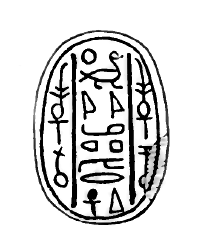
Meruserre Yaqub-Har was a pharaoh of Egypt during the 17th or 16th century BCE. As he reigned during Egypt's fragmented Second Intermediate Period, it is difficult to date his reign precisely, and even the dynasty to which he belonged is uncertain.

Amenirdis I was a God's Wife of Amun during the 25th Dynasty of ancient Egypt. Originating from the Kingdom of Kush, she was the daughter of Pharaoh Kashta and Queen Pebatjma, and was later adopted by Shepenupet I. She went on to rule as high priestess, and has been shown in several artifacts from the period.

Khasekhemre Neferhotep I was an Egyptian pharaoh of the mid Thirteenth Dynasty ruling in the second half of the 18th century BC during a time referred to as the late Middle Kingdom or early Second Intermediate Period, depending on the scholar. One of the best attested rulers of the 13th Dynasty, Neferhotep I reigned for 11 years.

Sobekhotep III was an Egyptian king of the Thirteenth Dynasty of Egypt who reigned three to four years, c. 1740 BC or 1700 BC.

Scarabs were popular amulets and impression seals in ancient Egypt. They survive in large numbers and, through their inscriptions and typology, are an important source of information for archaeologists and historians of the ancient world. They also represent a significant body of ancient art.
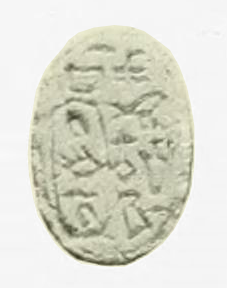
Ineni was an ancient Egyptian queen who lived during the Thirteenth Dynasty .
She is so far only known from 21 scarabs and a seal impression from Kerma. She had the titles Great Royal Wife and she, who is united with the white crown. She is one of the first ancient Egyptian queens whose name was written within a cartouche. This approach to writing a name was previously only used for kings' names and some kings' daughters holding special positions. The name of Ineni's husband is not known with any certainty. It is thought that it was king Merneferre Ay, as her scarabs are similar in style to that of this king.

Geb was the Egyptian god of the earth and a mythological member of the Ennead of Heliopolis. He could also be considered a father of snakes. It was believed in ancient Egypt that Geb's laughter created earthquakes and that he allowed crops to grow.

Seankhibre Ameny Antef Amenemhat VI was an Egyptian pharaoh of the early Thirteenth Dynasty ruling in the first half of the 18th century BC during a time referred to as the late Middle Kingdom or early Second Intermediate Period, depending on the scholar. Amenemhat VI certainly enjoyed a short reign, estimated at 3 years or shorter. He is attested by a few contemporary artefacts and is listed on two different king lists. He may belong to a larger family of pharaohs including Amenemhat V, Ameny Qemau, Hotepibre Qemau Siharnedjheritef and Iufni.
Nubhetepti was an ancient Egyptian queen with the titles king's wife and king's mother. She is mainly known from scarab seals, which are datable by style to the 13th Dynasty, around 1750 BC. She is also known from a statuette found at Semna. Her husband is unknown. However, king Hor had a daughter called Nubhetepti-khered. This translates as Nubhetepti-the-child and indicates that there was another (older) Nubhetepti around at the same time. For that reason it has been argued that Nubhetepti was the wife of king Hor and perhaps the mother of the princess Nubhetepti-khered. There are other scarabs of a queen Nubhetepti with the titles Great Royal Wife and she united with the white crown. These scarabs belong perhaps to another queen with the same name.

The Eighteenth Dynasty of Egypt is classified as the first dynasty of the New Kingdom of Egypt, the era in which ancient Egypt achieved the peak of its power. The Eighteenth Dynasty spanned the period from 1550/1549 to 1292 BC. This dynasty is also known as the Thutmosid Dynasty for the four pharaohs named Thutmose.

Sobekemsaf(sbk-m-z3=f) was an ancient Egyptian queen of the 17th Dynasty. She was the wife of pharaoh Nubkheperre Intef and sister of an unidentified pharaoh, probably Sekhemre-Heruhirmaat Intef, Sobekemsaf II or Senakhtenre Ahmose.
Tjan was the wife of the ancient Egyptian king Sobekhotep IV of the 13th Dynasty, during the late 18th century BC.
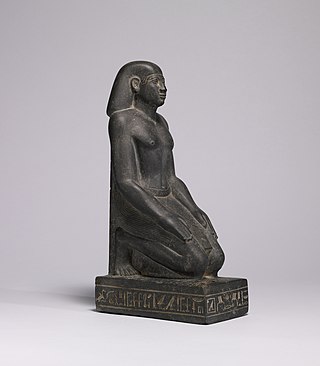
Sasobek was an ancient Egyptian vizier, who officiated between the late 25th – early 26th Dynasty, during the reign of pharaoh Psamtik I. Being the "Vizier of the North", he resided and officiated from Sais, in Lower Egypt.
















